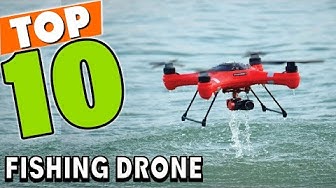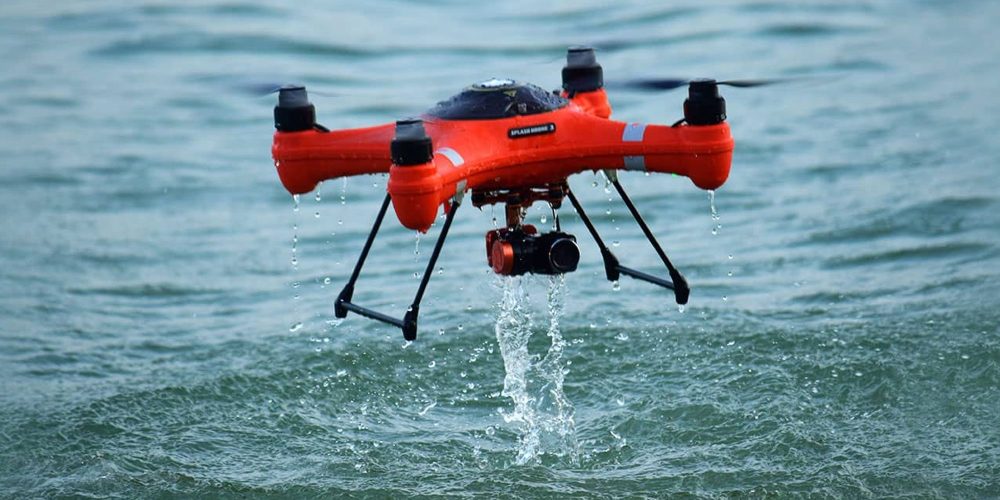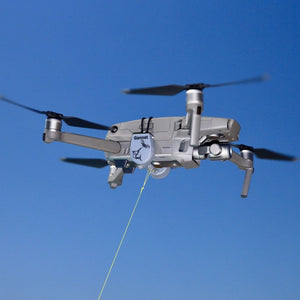
If you are a passionate fisherman, and you live in Australia you can use a drone for an aerial view of your property's waters. A drone can have many features such as an angle adjustable camera and GPS positioning system. Fishing lines can be purchased that are extremely stable and secure. The SKY RIGGER drone is one such example.
SKY RIGGER, a drone fishing line, is available
The SKY RIGGER, a flexible fishing system for drones, allows you fish from the air using minimal effort. Two rotating leg clamps allow the system to be attached to a variety of drone models. The release mechanism has a bayonet style connection and a camlock arm to quickly open the line clamps. Unlike other drones, the Sky RIGGER requires no batteries and can accommodate all fishing techniques safely.
The SKY RIGGER comes with an automatic release mechanism that allows you to let go of the line when a fish catches your fly. The line can be manually released by either your rod or hand. This feature is available on all models of the SKY RIGGER. It is highly recommended to buy a Phantom 3 first before purchasing the new SKY RIGGER. These are the pros and cons of this new line system.
It features a mechanical payload release
One of the most important features of a good drone is its mechanical payload release. Many are designed to make it easy for anglers to remove their fishing line. Some models lack a release mechanism. Instead, users must "yank the fishing line" to free the drone. This can be difficult, especially for those who aren’t used to releasing the line with their hands.

The payload release mechanism is another important feature. Payloads should be capable of releasing the drone's line once the fish has been caught. Catch and release fishing is a skill that should be practiced before you attempt it. Many people have had good experiences with the DJI Phantom drone. However, this technology is not yet comparable to other fishing drones.
It comes with a GPS location system
Rippton, a joint venture between Australia and the Netherlands that specializes on technology-oriented fishing products, is called Rippton. Its goal is improve anglers' success by creating products that enhance the fishing experience. Rippton's Mobula drone has a GPS positioning system as well as a remote release. The Mobula has the ability to hold bait at surface, provide resistance for kite clips, as well as being environmentally friendly.
It weighs only 3 pounds and can fly for as long as 18 minutes. It is also equipped with a high-tech GPS system that allows it to control it from up to 2,000 yards away. It has an operating range of 1000m (or half a mile) and intelligent flight modes. The point of interest feature allows it to take high-quality photos of its surroundings. You can see great images of fish thanks to its high-resolution digital camera.
It also has an failsafe feature
Aerokontiki's drone fisherman has a failsafe feature. It monitors the battery level, and releases the line when it is needed. It will return to dry land if the battery runs out and continue its mission. It operates with industrial-grade flightcontrollers, and it can work anywhere without requiring calibration. The drone can be used in even the most challenging water spots, and is waterproof.

FAQ
What kind of batteries is a drone using?
Drones are powered by lithium-ion battery. A typical drone uses between 3 and 6 volts.
What US states have drones made legal?
Legally, you can operate a drone to perform hobby tasks. The Federal Aviation Administration (FAA) has set up guidelines that allow people to use small unmanned aircraft systems (UASs). Before UASs can be flown, they must be registered with FAA. The FAA also allows commercial operators to fly these devices if certain conditions are met.
How can I keep drones away?
Drones are becoming increasingly popular for home surveillance, but they also threaten privacy and security. Install motion sensors on your property to detect any unapproved flying objects. This will help you avoid being attacked by drones.
Statistics
- Research and Markets predict a growth rate of 51.1% over the next five years. (thedroneu.com)
- According to industry research from ZipRecruiter , there are 10 cities where the typical salary for a Drone Pilot job is above the national average. (dronesgator.com)
- According to the multiple listing service (MLS), houses and apartments with drone photographs are up to 68 percent more likely to sell than those without pictures. (thedroneu.com)
External Links
How To
How to Fly Drones for Beginners
A drone is a remote-controlled aircraft used for aerial photography, cinematography, surveillance, scientific research, and hobby purposes. The technology behind drones has been around since World War II. DJI introduced their Phantom series of quadcopters in 2010, but commercial use only began in 2010. Many types of drones have been made available since then, from beginner-friendly models such as the Parrot AR Drone 2.0, to high-end multi-rotor craft such as the DJI Mavic Pro.
There are several ways to fly a drone, including;
-
Remote control - This method uses a control device attached to your hand, which enables you to steer the drone through its flight path. There are two main types of controllers: On/Off switches (like a radio) and joysticks.
-
Manual Control- This allows you to control your drone remotely via GPS coordinates. You must keep track of the location where you want the drone to go and follow the instructions from the app.
-
Autonomous Flight – This is when the drone handles all the piloting tasks. It's basically flying autonomously without any human intervention. The drone must be equipped with a camera and sensors that can capture images and data in order to fly autonomously.
-
Triggered Flying - This method works in the same way as manual control. However, the pilot has to manually set up a route for the drone and it follows that route until reaching the endpoint. After the program is complete, the drone automatically returns to the ground.
-
Landing Gear – Some drones are equipped with landing gear, which allows them to safely land if they lose power during flight.
-
Goggles - Some pilots wear goggles to protect themselves from debris while operating.
-
Camera - You can capture photos and videos with your drone from the air.
-
Obstacles - Some drones can be equipped with obstacle avoidance systems that prevent them from crashing into obstacles.
-
Speed – Some drones can reach speeds in excess of 40 mph.
-
Battery Life: Most drones have a battery life of between 20 and 30 minutes depending on how many power sources you use.
-
Distance - Some drones can travel up 30 miles depending on the model.
-
Power source – Some drones require external power sources, others require internal batteries.
-
Weight - Some drones are lighter than others, while some models can weigh as much as 4 pounds.
-
Size - From small drones that can be carried in the palm of one's hand to larger drones that weigh over 50 pounds, drones come in a variety of sizes.
-
Price - High-end drones can go for thousands of dollars, while low-cost models start at $100.